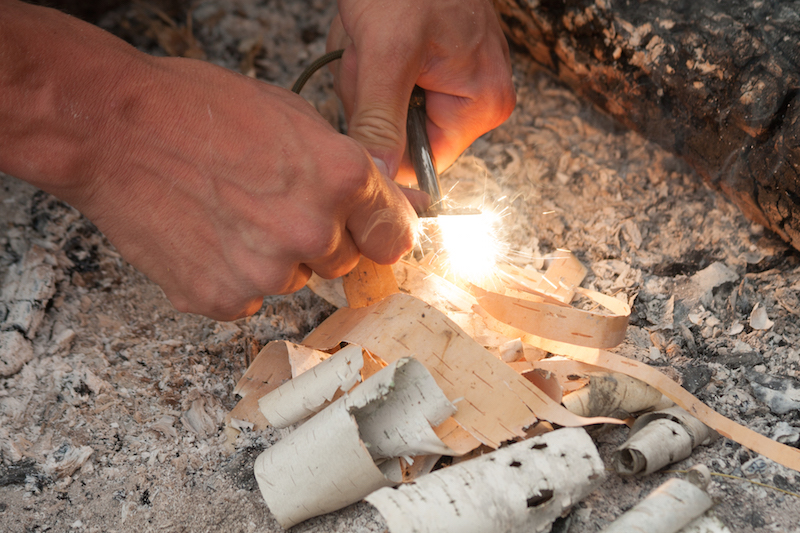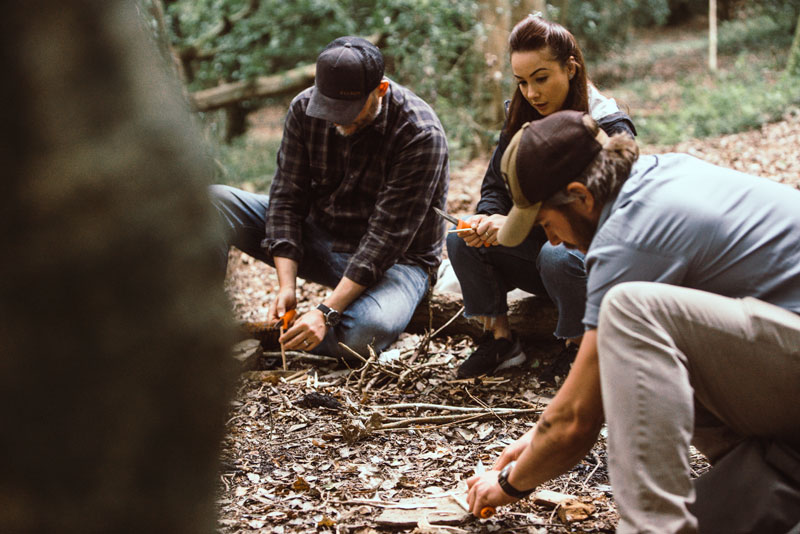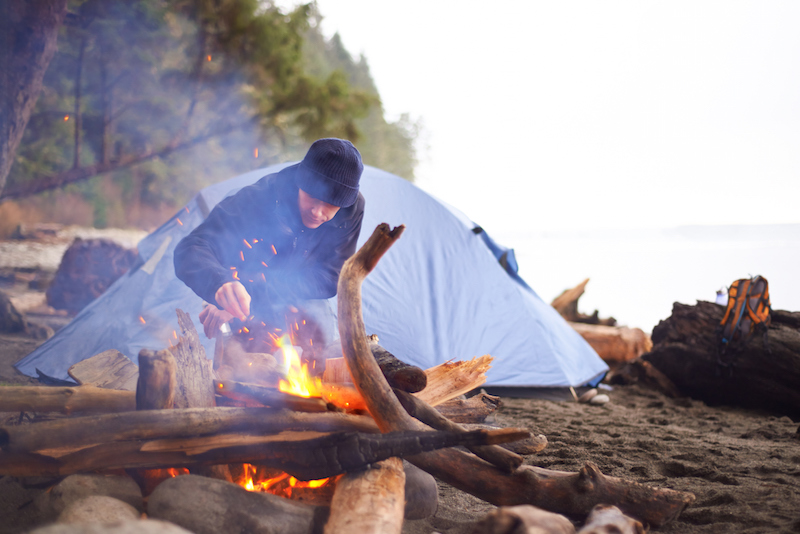A fire is the cornerstone of any bushcraft or survival scenario. Whether it’s an essential because you’ve got into trouble while out hiking or a luxury when you are camping with friends and want to toast some marshmallows, fire starting is a useful skill.
What you’ll find below is a list of materials that can be used to start a fire. For the purpose of this article we’ll be assuming you are in a position where you are able to create a spark, ember or open flame. This could be through the use of a lighter, matches, a fire steel or friction methods.
Before any of this though, you’ll need to gather your fire materials, starting with small and extremely thin wood through to finger sized pieces, wrist sized pieces and so on. As the old adage goes, ‘prior planning prevents piss poor performance’. As well as gathering your materials and sorting your fire starting device or method, you’ll need to source your tinder. Here are a few ideas…
Starting a fire with birch bark

Widely found in woodland across the Northern Hemisphere, birch bark is a very useful material when it comes to making fires. You’ll find it all over the UK and you’ll notice that often the bark is peeling off. Try not to be tempted to take it from live trees and stick to using bark from dead trees.
Once you have your birch bark, you’ll want to take a knife and rub it against the bark in order to generate a bunch of small shavings. This is what will take the initial spark. With your remaining bark you’ll need to tear it up into thin strips. You’ll want to first use your fire steel (or whichever method you have chosen) to generate a spark into the shavings. Once they have caught you’ll need to add the thin strips of bark, which will also light up. You’ll then be ready to start adding your thin sticks/pieces of wood.
Lighting a fire with cotton wool
A very quick, easy, simple and cheap option for starting a fire is actually cotton wool. You can buy large quantities from supermarkets for next to nothing and it takes a spark very well. Before trying to ignite the wool, ruffle the fibres and gently pull them apart so that sparks can reach the softer inner yarns. This should take a spark quite well, but if you need a bit of extra help Vaseline is the answer. Coat your cotton wool balls in Vaseline before heading out and it will take a spark even easier and stay alight for longer.
Creating fire with steel wool
Another simple way to create fire with manmade materials is to make use of steel wool – the finer the better. You can buy this from most DIY shops and again, it’s pretty inexpensive. Once you’ve got steel wool you can either choose to ignite it with a spark or with a 9v battery. You’ll need extra tinder ready for this one such as dry grass, birch bark or toilet paper.
If using a battery, gently rub the live end across the steel wool and very quickly you will see sparks and embers. Carefully surround this with your extra tinder and blow on it until it catches properly, but watch your hands, as it’s very easy to burn yourself. The wire wool will take a spark much in the same way as cotton wool, but you’ll still need to use the extra tinder and blow on the embers to turn it into an actual flame.
Starting a fire using old man’s beard
 No, not any random old man’s beard… We’re talking about the lichen that is often found on old spruce, birch and fir trees. It looks like an old man’s beard (obviously!) and is usually a grey-green colour. The less colour it has, the dryer it is and the more likely it will take a spark. You’ll want to gather a big handful of it and, if possible, keep it in a pocket for a while to dry it out some more. When you’re ready, it should take a spark very well if it is dry enough, but be aware that it does burn through quicker than other tinders, so you’ll need to get your dry grass or extra bark onto it as soon as you can.
No, not any random old man’s beard… We’re talking about the lichen that is often found on old spruce, birch and fir trees. It looks like an old man’s beard (obviously!) and is usually a grey-green colour. The less colour it has, the dryer it is and the more likely it will take a spark. You’ll want to gather a big handful of it and, if possible, keep it in a pocket for a while to dry it out some more. When you’re ready, it should take a spark very well if it is dry enough, but be aware that it does burn through quicker than other tinders, so you’ll need to get your dry grass or extra bark onto it as soon as you can.
Try it yourself
Filson is an American clothing and equipment brand that creates hardwearing products that stand up to the rigors of the outdoors. During our bushcraft weekend in Cornwall we found some of the company’s products to be the perfect accompaniment to an outdoor leisure environment.
Founded by Thom Hunt in 2012, 7th Rise is a place of passion and opportunity set on the edge of the River Fal in Cornwall. In this beautiful, peaceful environment, Thom and his team deliver unforgettable experiences where you can learn about all aspects of outdoor living including fishing, bushcraft, butchery and wild food cookery.



